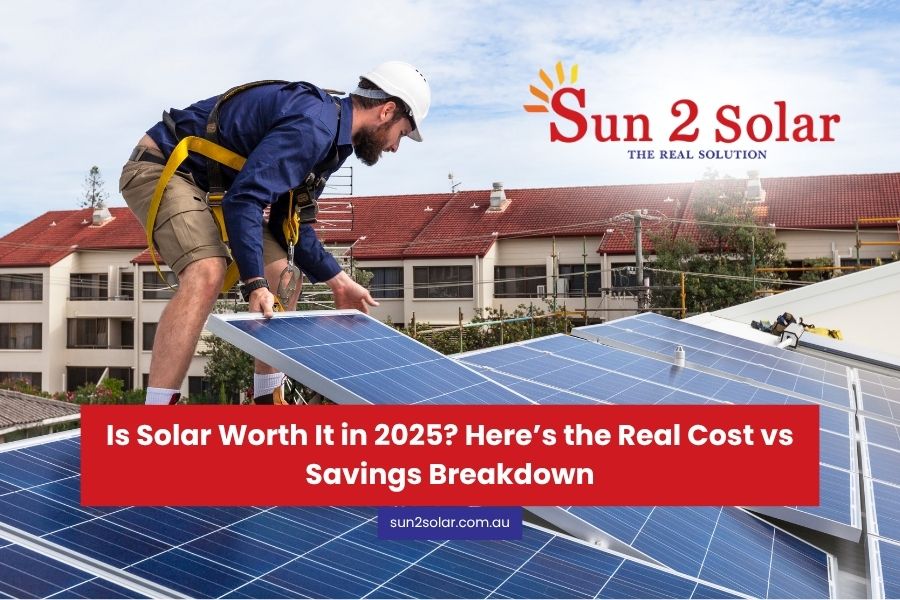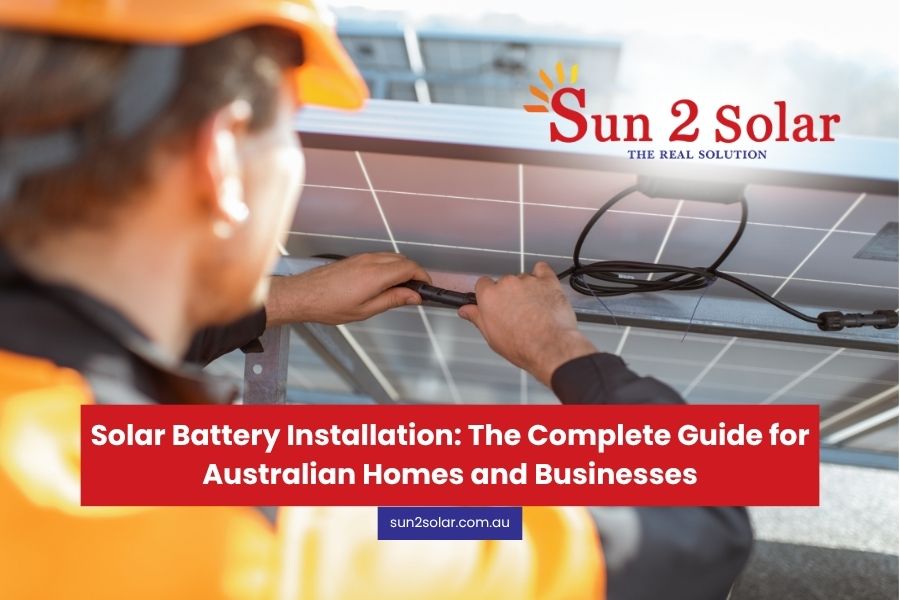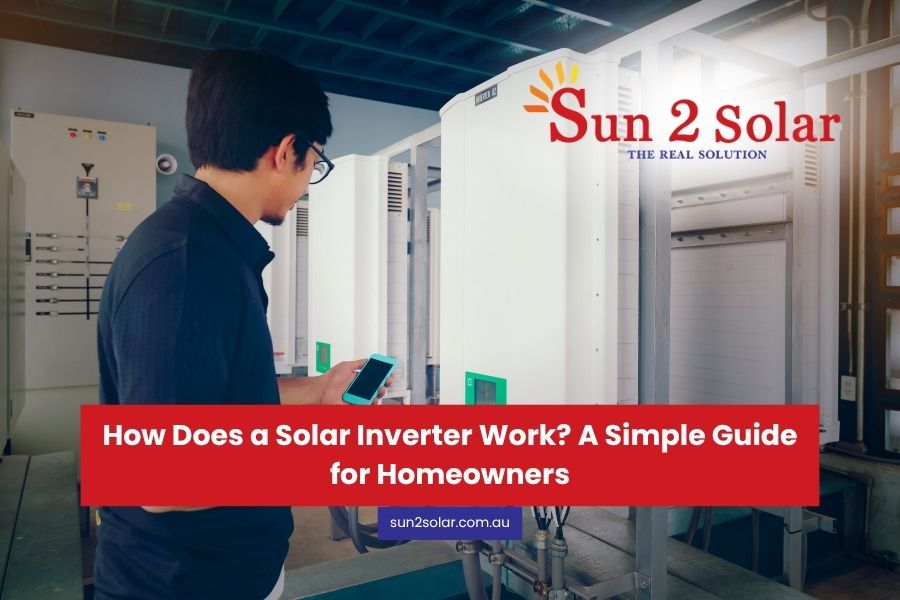
Table of Contents
Is Solar Worth It in 2025? Here’s the Real Cost vs Savings Breakdown
Solar power will continue to be a very fashionable and economically lucrative investment to Australian households and corporations in Ballarat up to the year 2025. The value proposition of solar has never been so evident with the increasing government rebates, the higher competitive prices, and the high costs of energy.
Here is a breakdown on whether or not solar is worth it in 2025 based on the real costs and savings in the long run of a typical family in Ballarat or regional Victoria.
Solar Panel Costs in 2025
The initial expense of solar panel installation has reached a stabilising point in 2025 following years of consistent decreases. In the case of an average 6.6 kW system, which is the sweet spot in most families, installed costs (with rebates) will be in the range of $4,500 to $6,000, depending on the quality of the panels and what is being offered by installers. Smaller systems (3-4kW) begin at approximately 3-4000 dollars, and larger systems such as 10kW can cost $8,000 to $12,000.
Factors Affecting Price
- Panel efficiency and warranty (premium panels cost more up front)
- Roof complexity, pitch, and access
- Whether a battery is included (see below for battery costs)
- Regional variations in rebates and installer labour rates
Ballarat Solar Rebates and Incentives Explained
With a battery added, you can future-proof your system and be independent of energy sources and avoid blackouts, but it will cost you a lot more to install. A 10-kWh battery (sufficient to serve most homes overnight) will cost $10,000–$13,000 installed in 2025, and a larger battery of 13-15 kWh will cost an average of $13,000–$17,000 even with the rebate included.
Typical savings from a battery: $400–$500 per year on top of what you save with panels alone. The additional payback period for a battery is usually 7–10 years, versus 3–5 years for basic solar panels.
Rebates & Incentives in Ballarat and Victoria
In 2025, Australian federal STC rebates continue to reduce the sticker price of solar systems by thousands. In the case of a 6.6 kW system in Ballarat, rebates will be approximately $2,500–$2,700 deducted automatically by your installer on the point of sale.
Victoria also offers other rebates at various times and even zero rate loans to eligible households-the rest of these schemes are prone to revision and thus, whenever you are ready to purchase, then do check to see what is being offered at that time.
Feed-in tariffs (FiTs) will be minimal in Victoria (9.9 -12 -1 per kWh), so instead of exporting surplus solar one should optimize self-consumption during the daytime.
Realistic Energy Bill Savings
- With a standard 6.6 kW solar system, households can cut grid electricity use by 40–60%, saving $1,000–$1,500 per year on average, even more for those with high daytime consumption or efficient energy management.
- With a 4-kW system, average annual savings are around $890 for Ballarat homes.
- With a battery, add an extra $400–$500 per year to your savings by using stored power at night.
Payback Period & Return on Investment
- Payback periods for solar panels (no battery) are now as low as 3–5 years, depending on household usage and self-consumption rates.
- After payback, all future savings are “profit” over the 20- to 25-year life of the system.
- Solar’s projected ROI for 2025 ranges from 6% to 20% annually, far exceeding most bank deposits or low-risk investments, with the added benefit of rising energy costs over time.
The Solar Math a Worked Example
For a Ballarat household with a 6.6 kW system:
- Installed cost (post-rebate): ~$5,500
- Annual savings: ~$1,200–$1,500
- Payback: ~4 years
- Total profit over 20 years (factoring in performance drop and minor maintenance): $18,000–$22,000
Add a battery, and the investment jumps to ~$16,500, with total annual savings near $2,000. The all-in payback then stretches to 8–10 years, but energy resilience and grid independence appeal to many households.
Key Drawbacks and Limitations in 2025
- Upfront cost remains the primary barrier, even with finance or lease deals.
- Lower feed-in tariffs mean solar is the most rewarding for that home during the day.
- Battery economics is improving, but payback is slower than panels alone.
- Home energy usage habits need to be adapted for maximum benefit.
Environmental Benefits
Every kilowatt of solar in Ballarat prevents about 1.2 tons of CO2 emissions per year, making solar a powerful tool for climate-conscious families.
Choosing the Best Solar Installer in Ballarat
Sun 2 Solar and other reputable Ballarat-based installers offer proven, transparent estimates, quality components, and ongoing support, critical for maximising return and minimising headaches.
As a homeowner in Ballarat, it can be a good idea to talk to a local expert like Sun 2 Solar and have them install a system that fits your roof, energy requirements and lifestyle.
Conclusion
Yes, solar power is worth it in 2025 for homes in Ballarat and nearby areas. With strong government help, solar systems can pay for themselves in just 3 to 5 years. You can save a lot on your electricity bills every year. Solar panels also come with long warranties and need little maintenance. If you plan to stay in your home for a long time, solar energy is a smart way to save money and help the environment.
If you want to save money and use clean energy, now is the best time to switch to solar. Contact Sun 2 Solar today for a free talk. Let their experts help you get lower power bills and a greener home.
Follow-Up Support
You might save money in the long term on replacement, in case of broken panels, water damage, or an old inverter that breaks repeatedly. Newer equipment can also improve efficiency. The team at Sun 2 Solar can test your system and let you know whether repair or replacement is the smarter choice.


